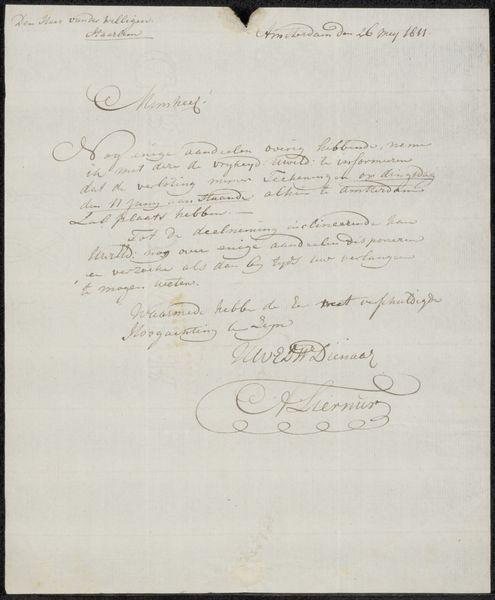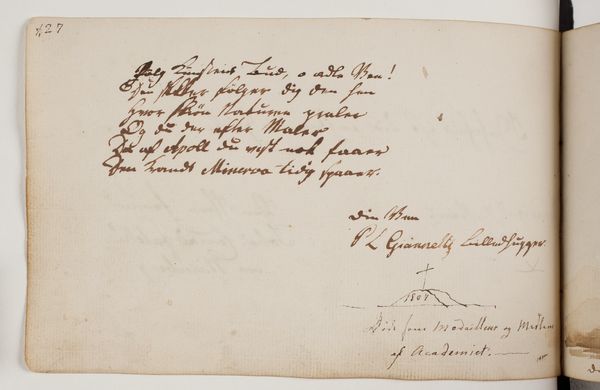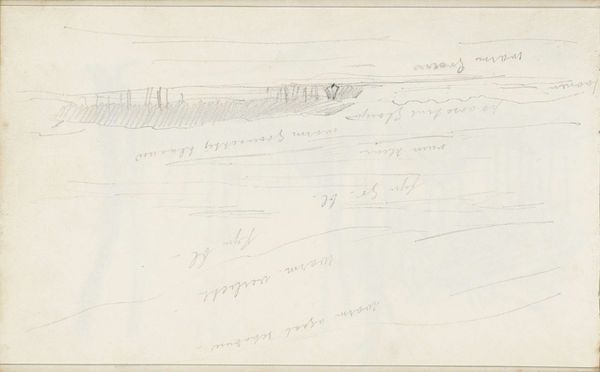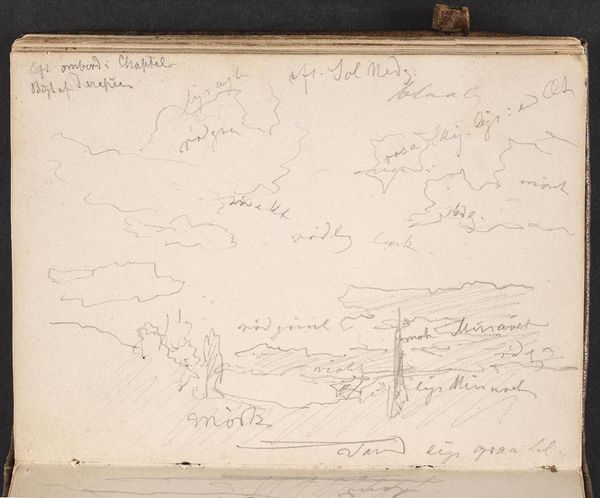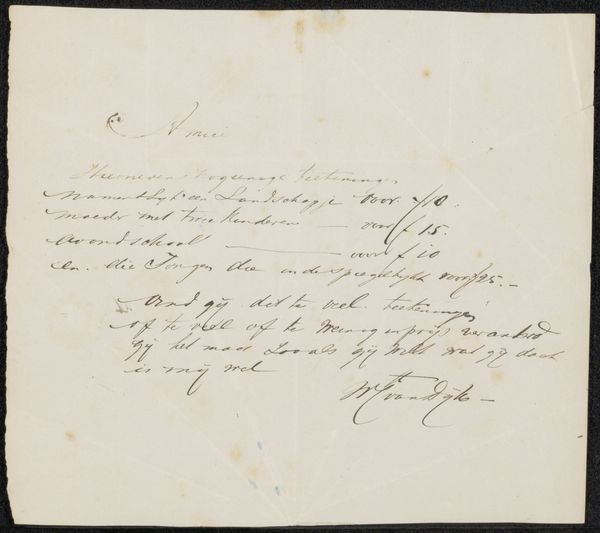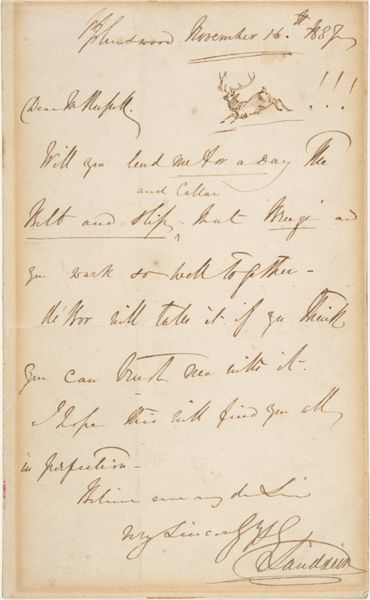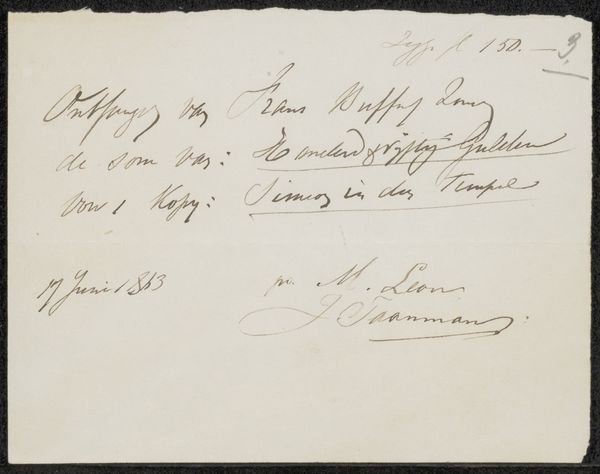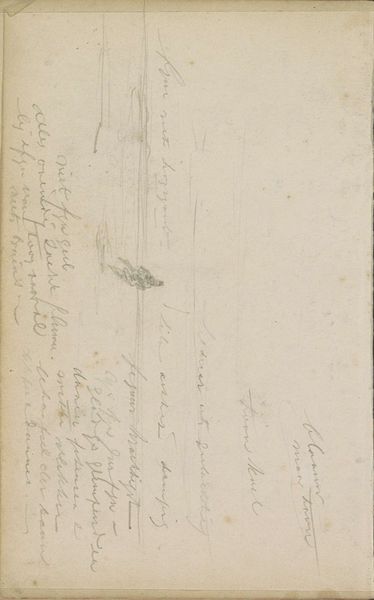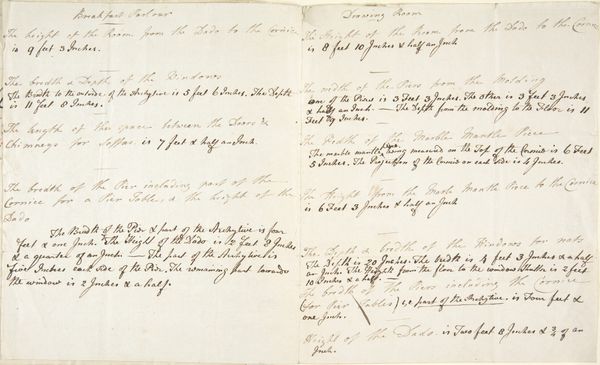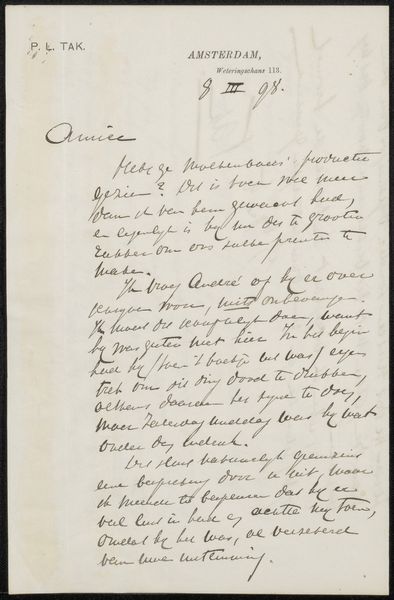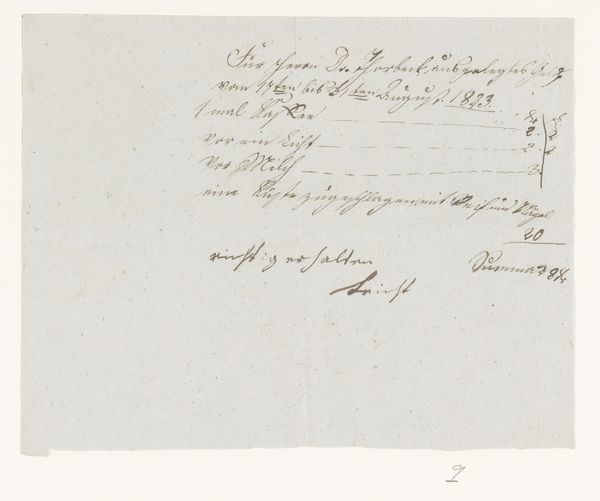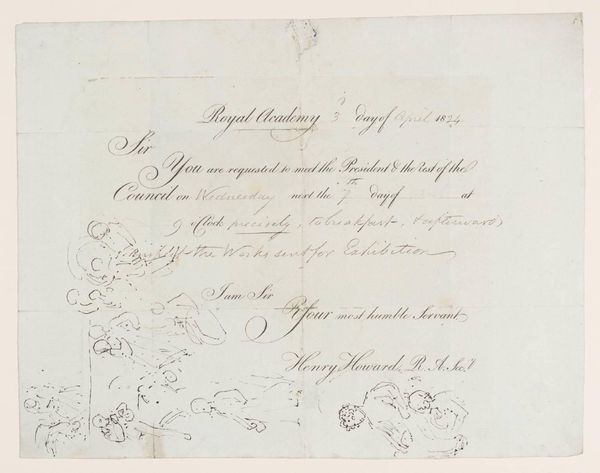
drawing, paper, ink
drawing
narrative-art
paper
ink
romanticism
line
calligraphy
Dimensions: 137 mm (height) x 216 mm (width) (Bladmål)
Curator: "Noder og hilsen fra Ignaz Moscheles"—that’s "Notes and Greetings from Ignaz Moscheles," an ink drawing from 1829, held here at the SMK. It gives us an insight into the world of early 19th-century musical society. Editor: My first thought? It's delicate! The inkwork has this gossamer quality. It’s like capturing a melody, something so fleeting, on paper. Makes me wonder about the hands that wrote this... and maybe even makes me want to learn German! Curator: The writing indeed serves to capture the emotions behind musical performance in the early 19th century; consider Romanticism’s elevation of sentiment and the idea of music as a direct expression of the soul. Examining this through a feminist lens, it’s interesting to consider the role women would have played in Moscheles's world and the work's accessibility (or inaccessibility) to women. Editor: Oh, absolutely! A backstage pass to a vanished world, a world humming with unseen energies, even secrets. I'd like to believe I could simply hear a little romance novel played just from reading the piece once, haha! And there's a poignancy to any message of friendship sent between men or from men at this time as there were such specific parameters placed on friendships back then, no? The melody sits astride as something a little bolder, as the actual 'art' being shared between genders... so to speak... perhaps to suggest its neutral qualities? Curator: That is a powerful reflection to consider: that music somehow sits between social restrictions. It suggests that within the confines of societal structures, musicality and emotional resonance offered a nuanced site for exchange, where gender roles and their constrictions could perhaps be transcended through the communal experience of art and personal connection through 'greeting'. The choice to unite calligraphy with musical composition then invites closer consideration into these complex artistic relations between public identity and private persona, especially in light of burgeoning nationalist sentiments throughout Europe at this time. Editor: Well said! For me, thinking about all of this now makes this piece seem much less delicate, or simply 'gossamer', but in fact brimming with life, the push and pull, maybe...the quiet revolt between people and society, and maybe all beautifully rendered with every graceful swirl. Curator: It certainly underscores how art is often deeply intertwined with the political landscape that both creates and consumes it, inviting an openness that still speaks across centuries. Editor: Exactly. And like any good melody, you hear something new each time, each note and greeting offering another little chance to re-understand an older social, musical world, even in our own modern lives.
Comments
No comments
Be the first to comment and join the conversation on the ultimate creative platform.

